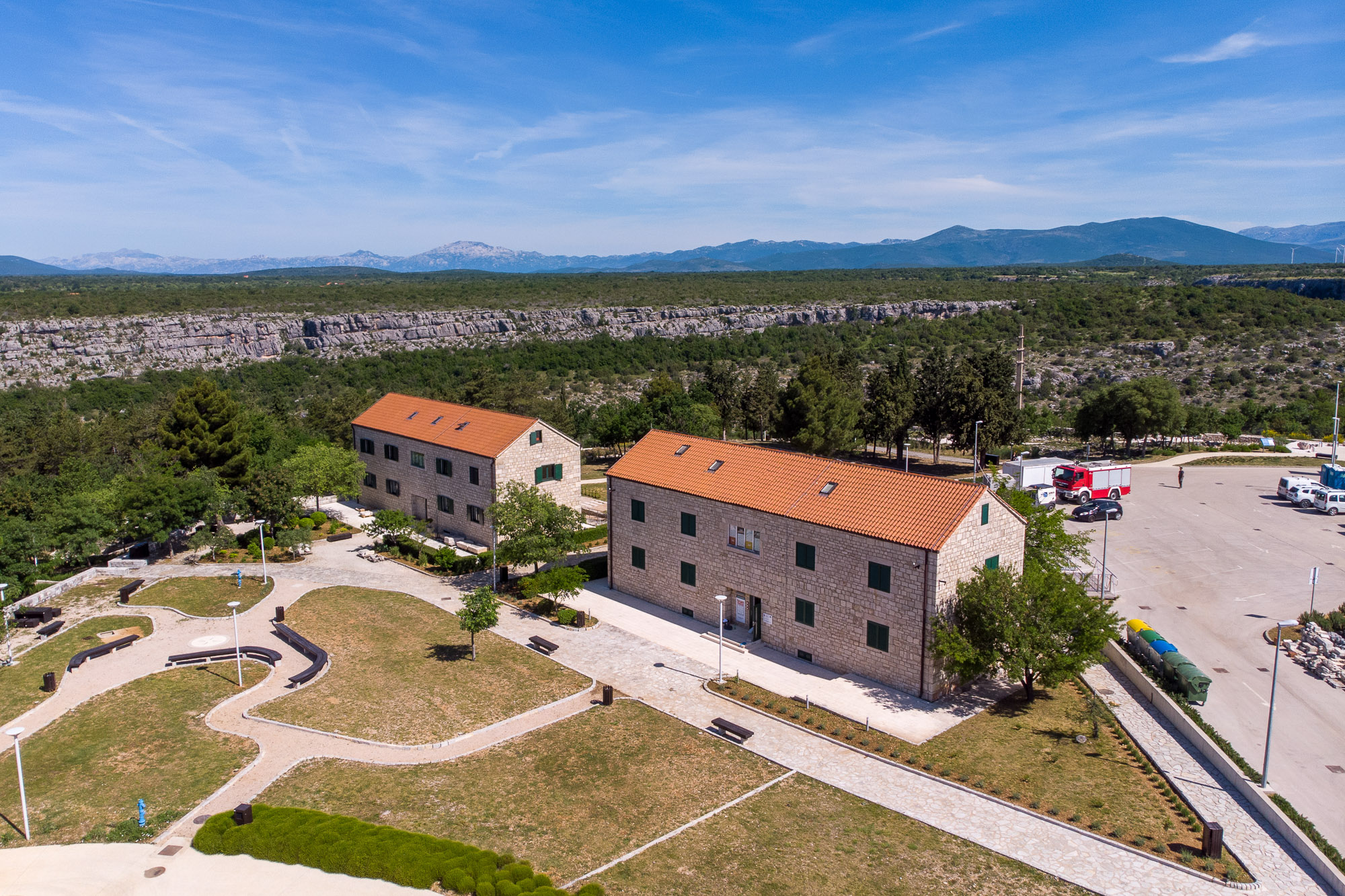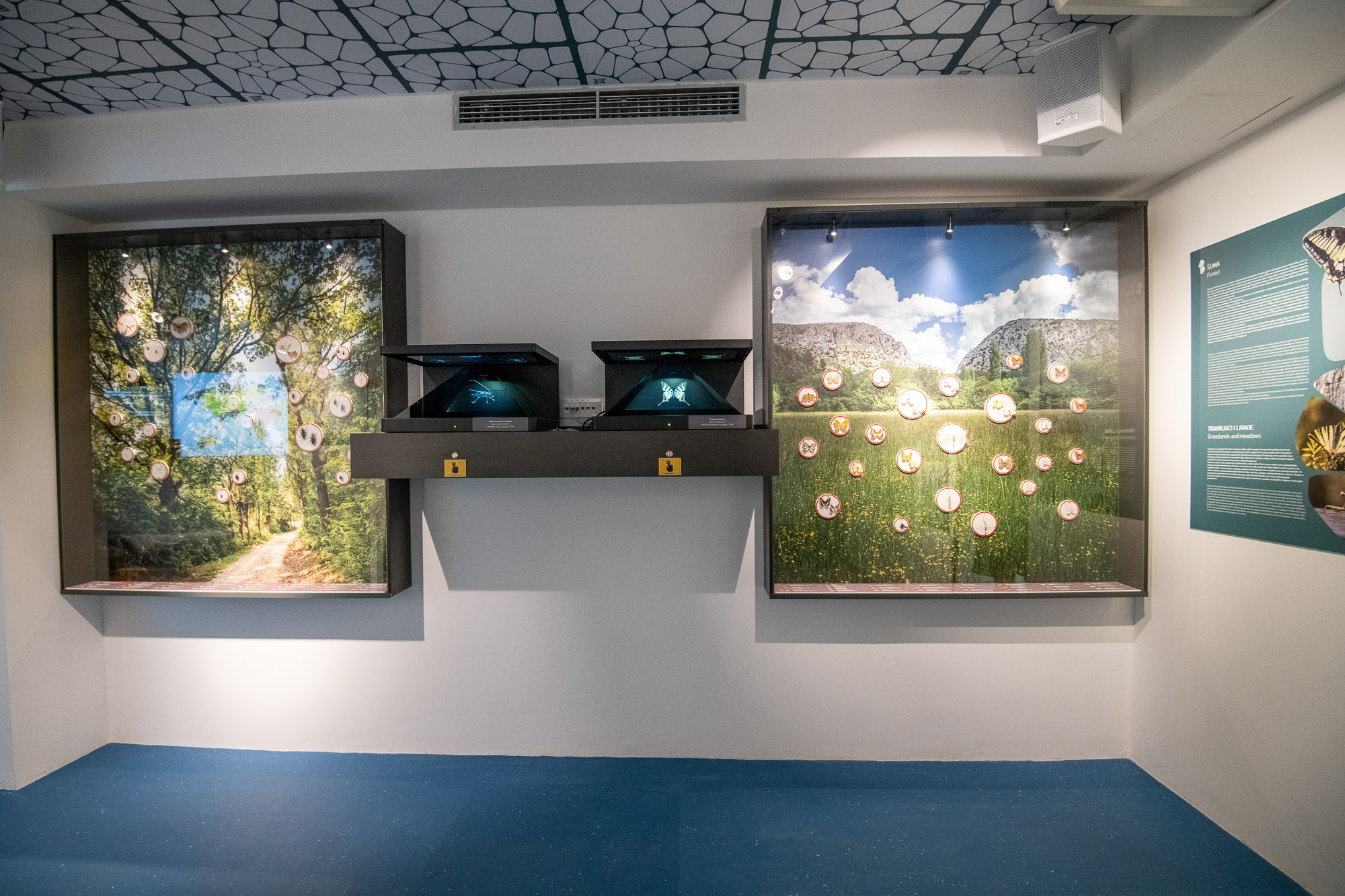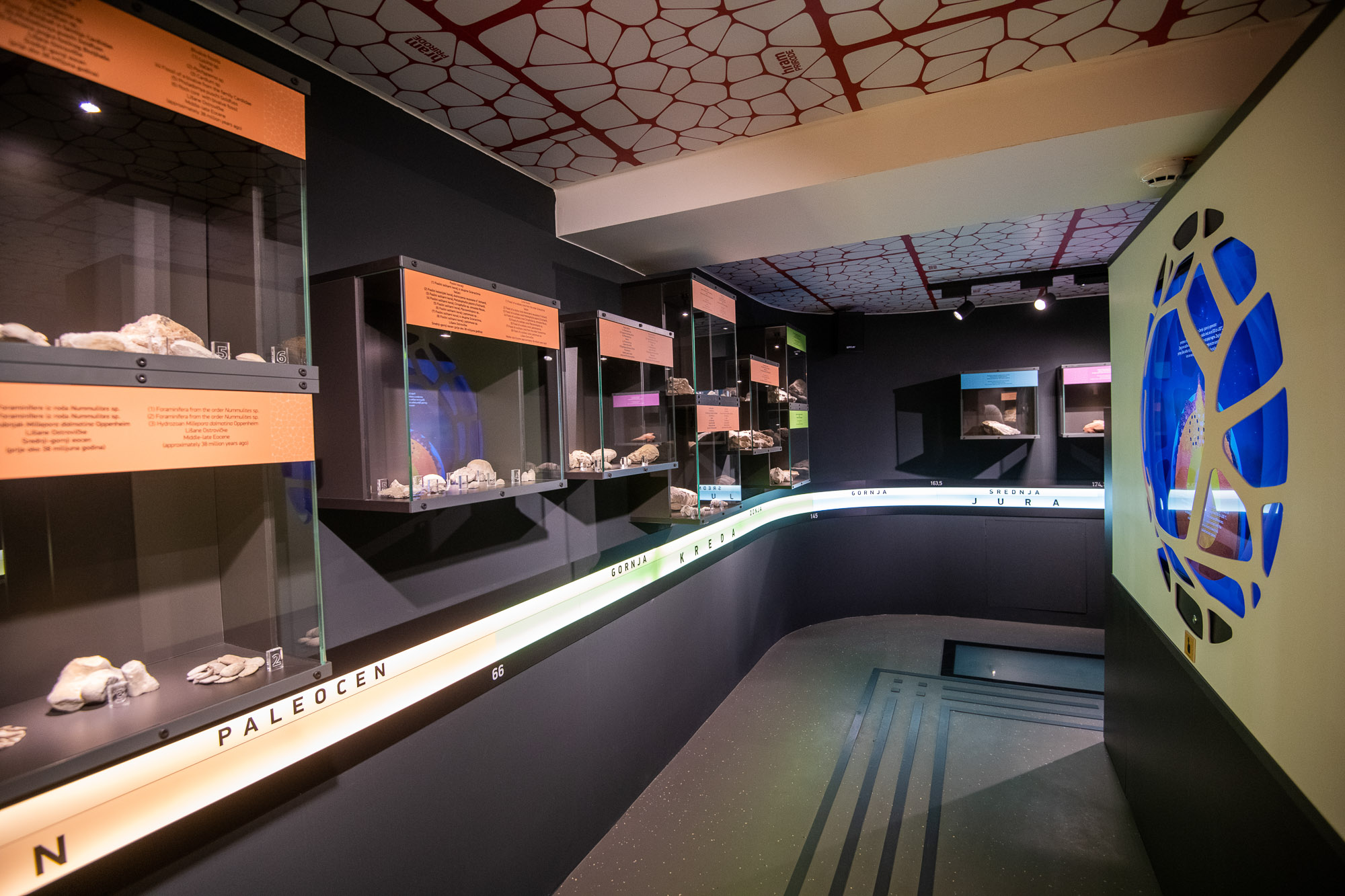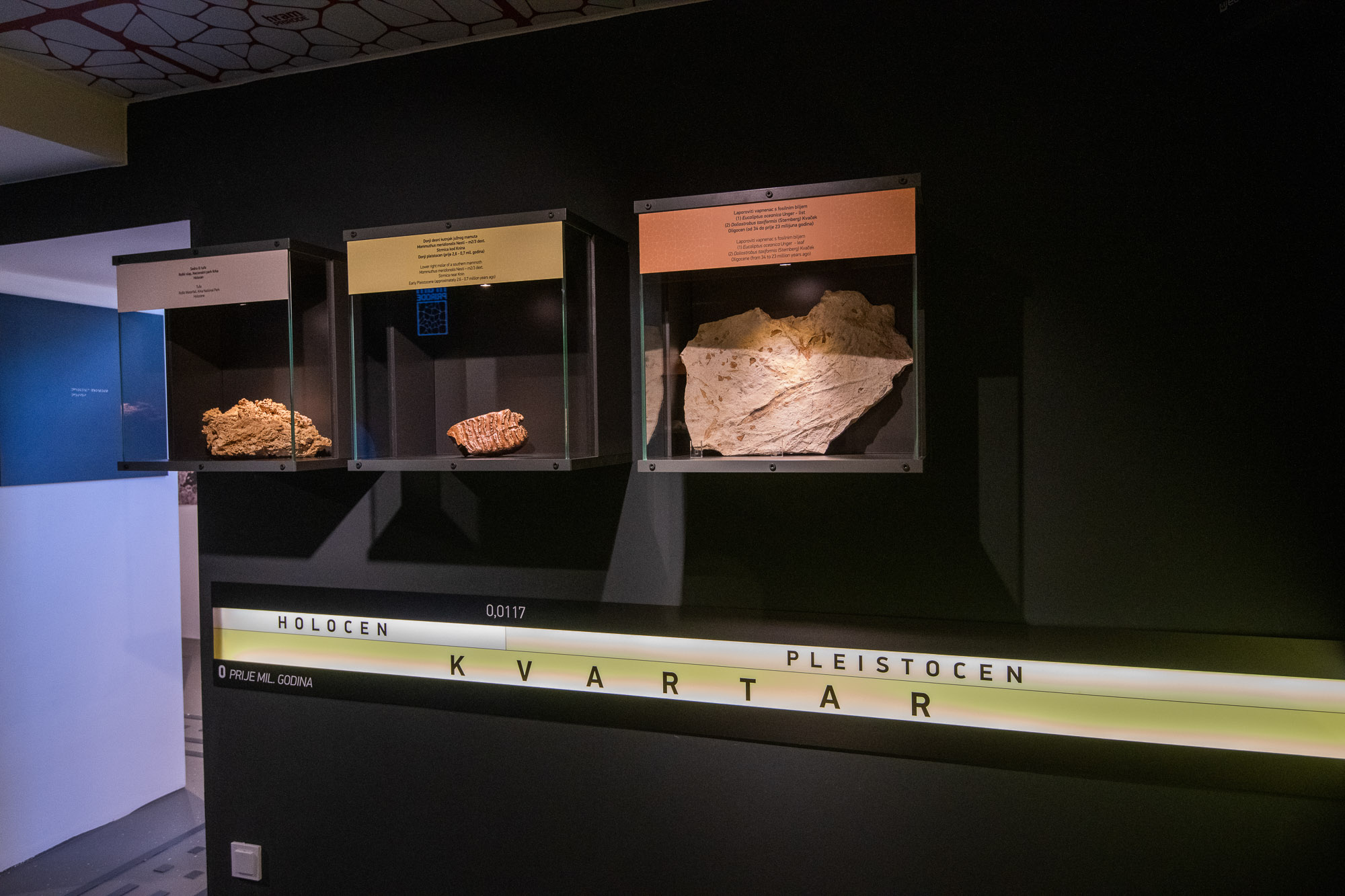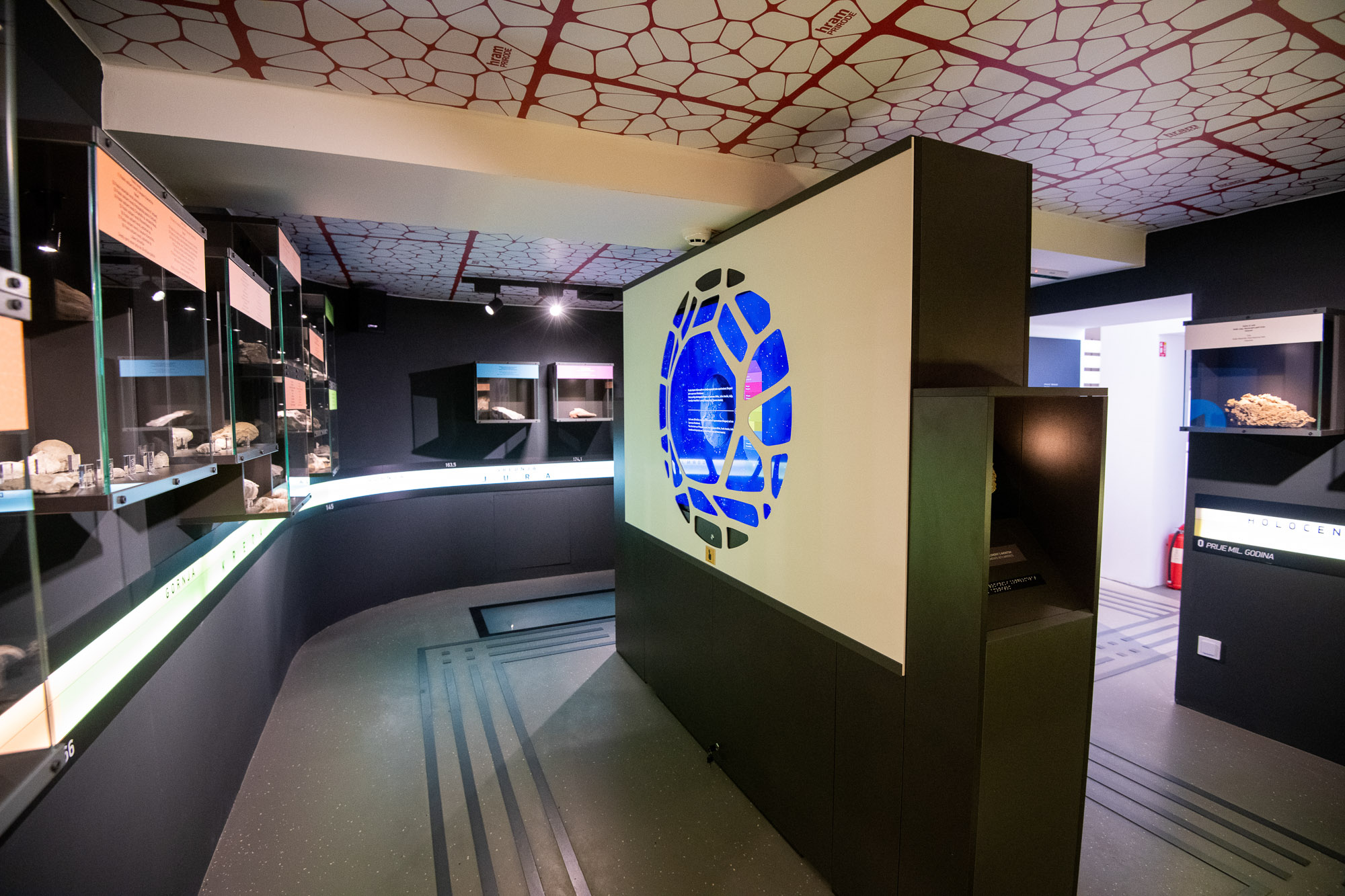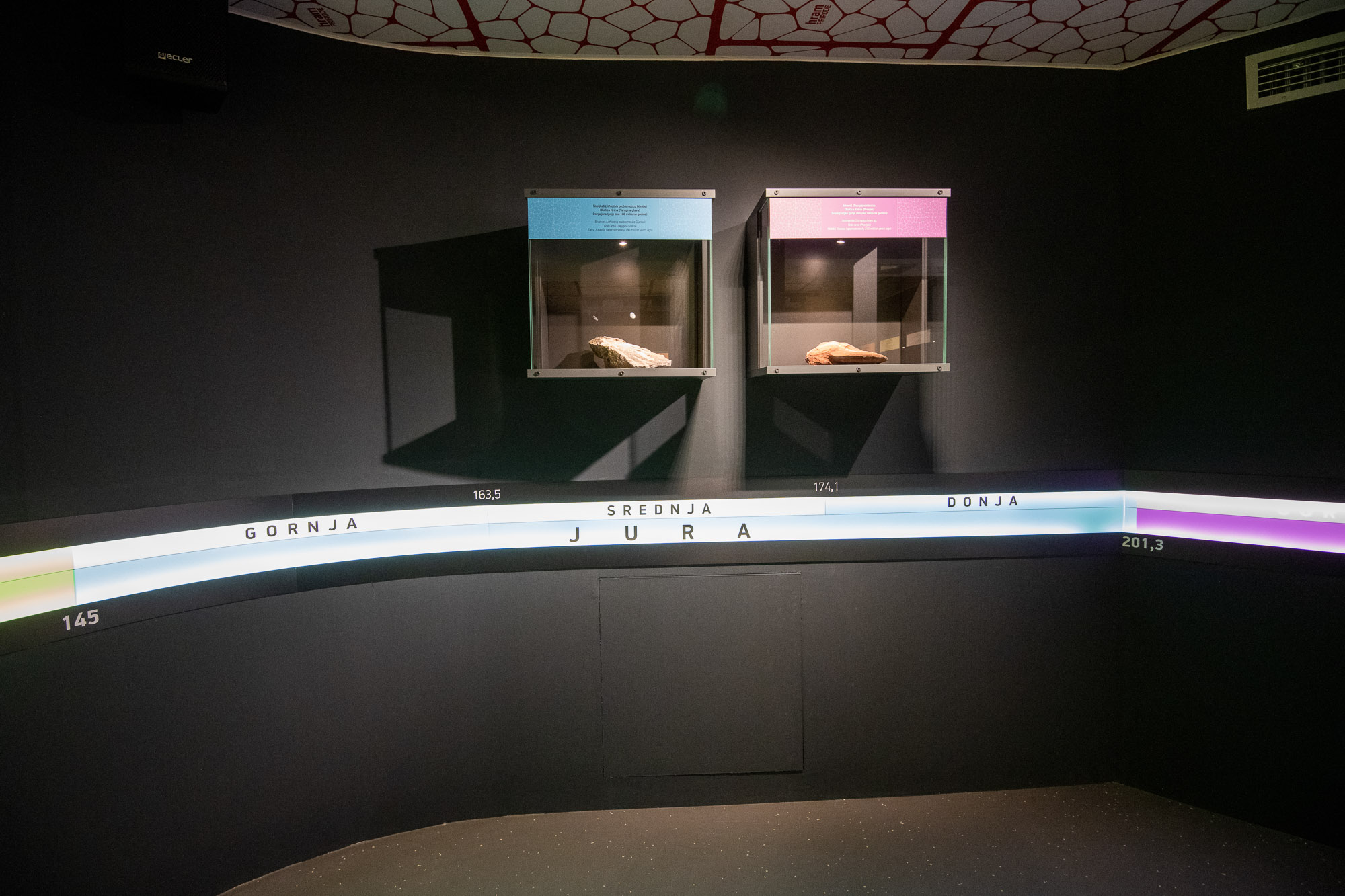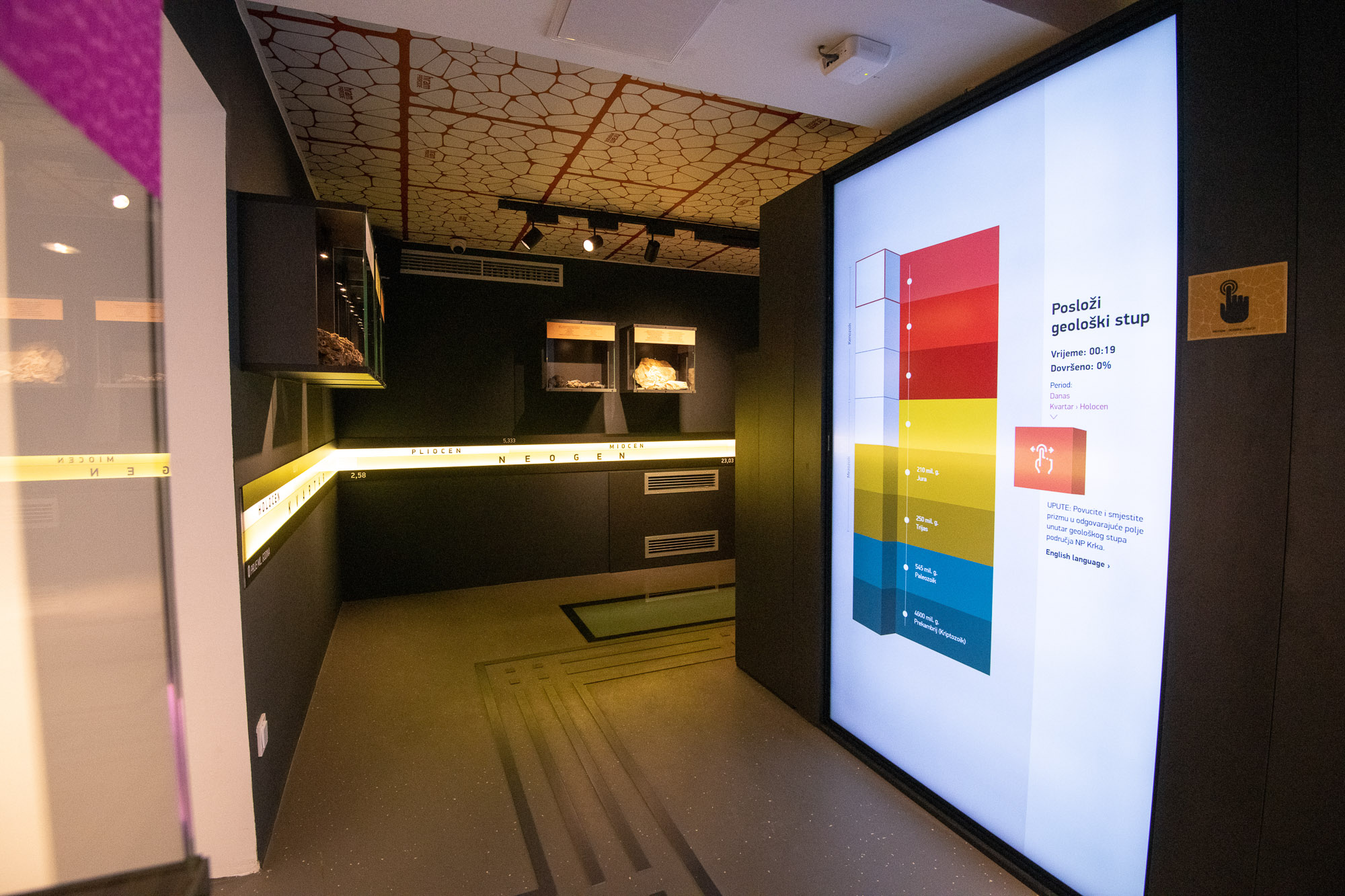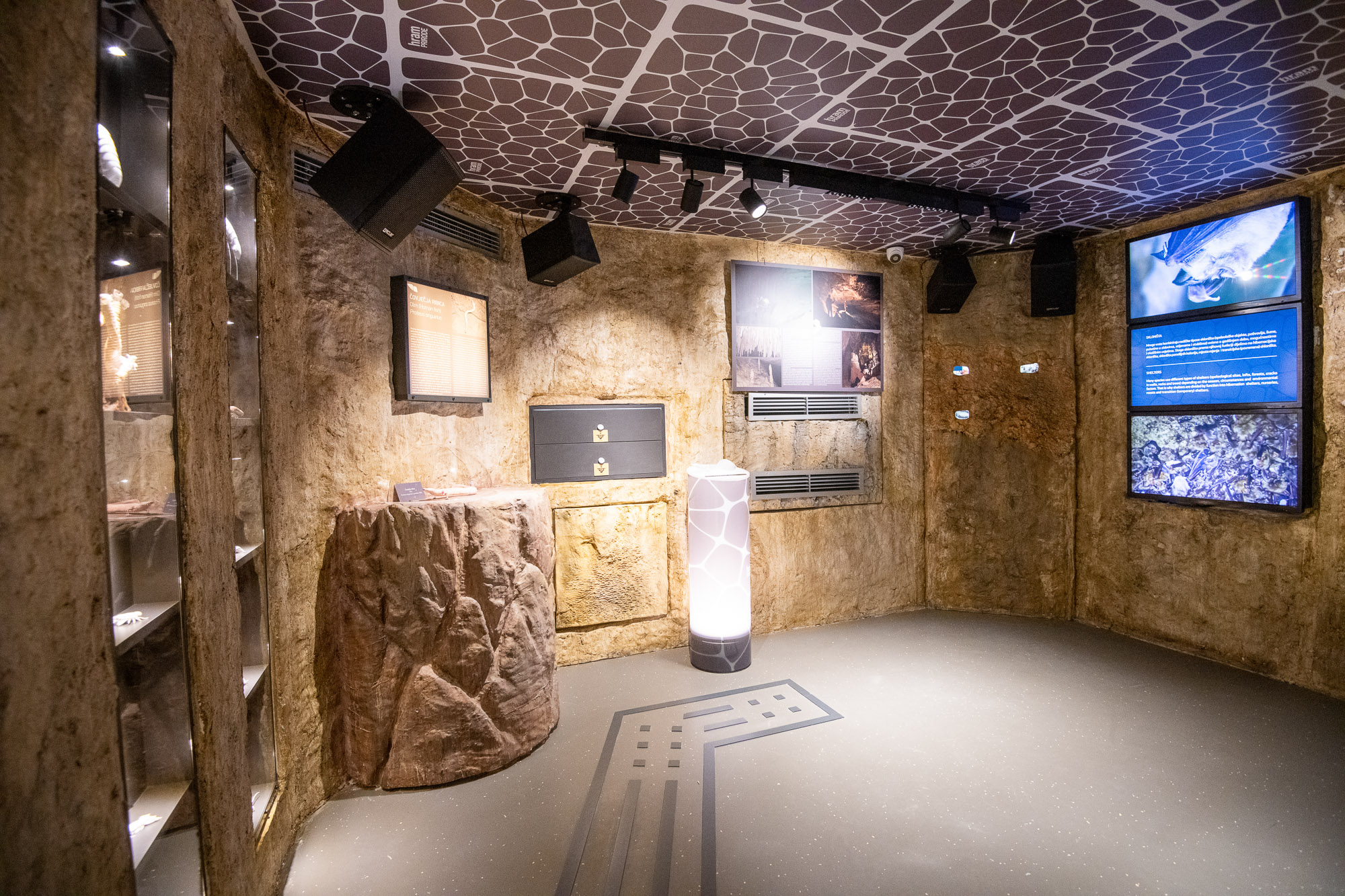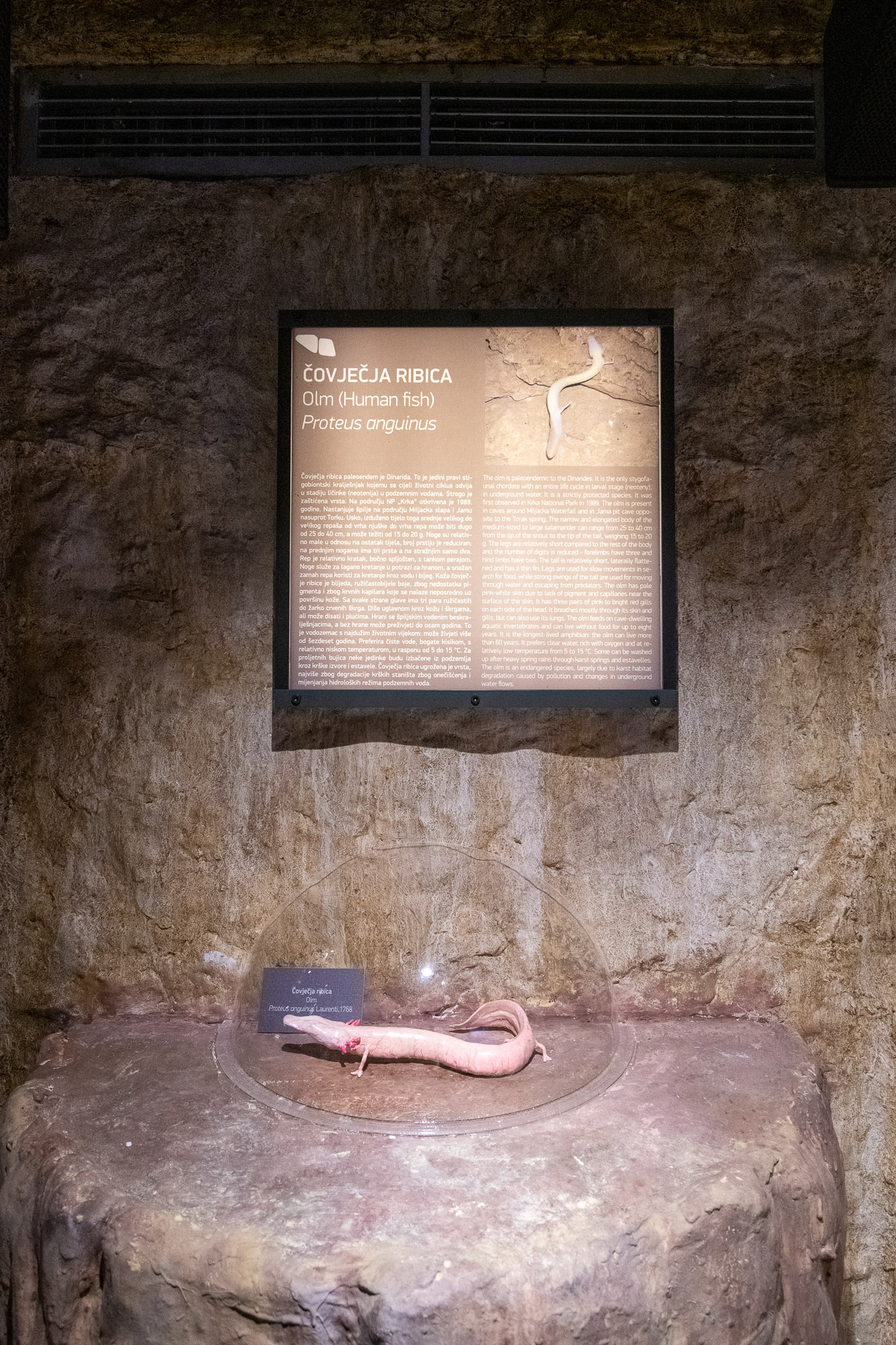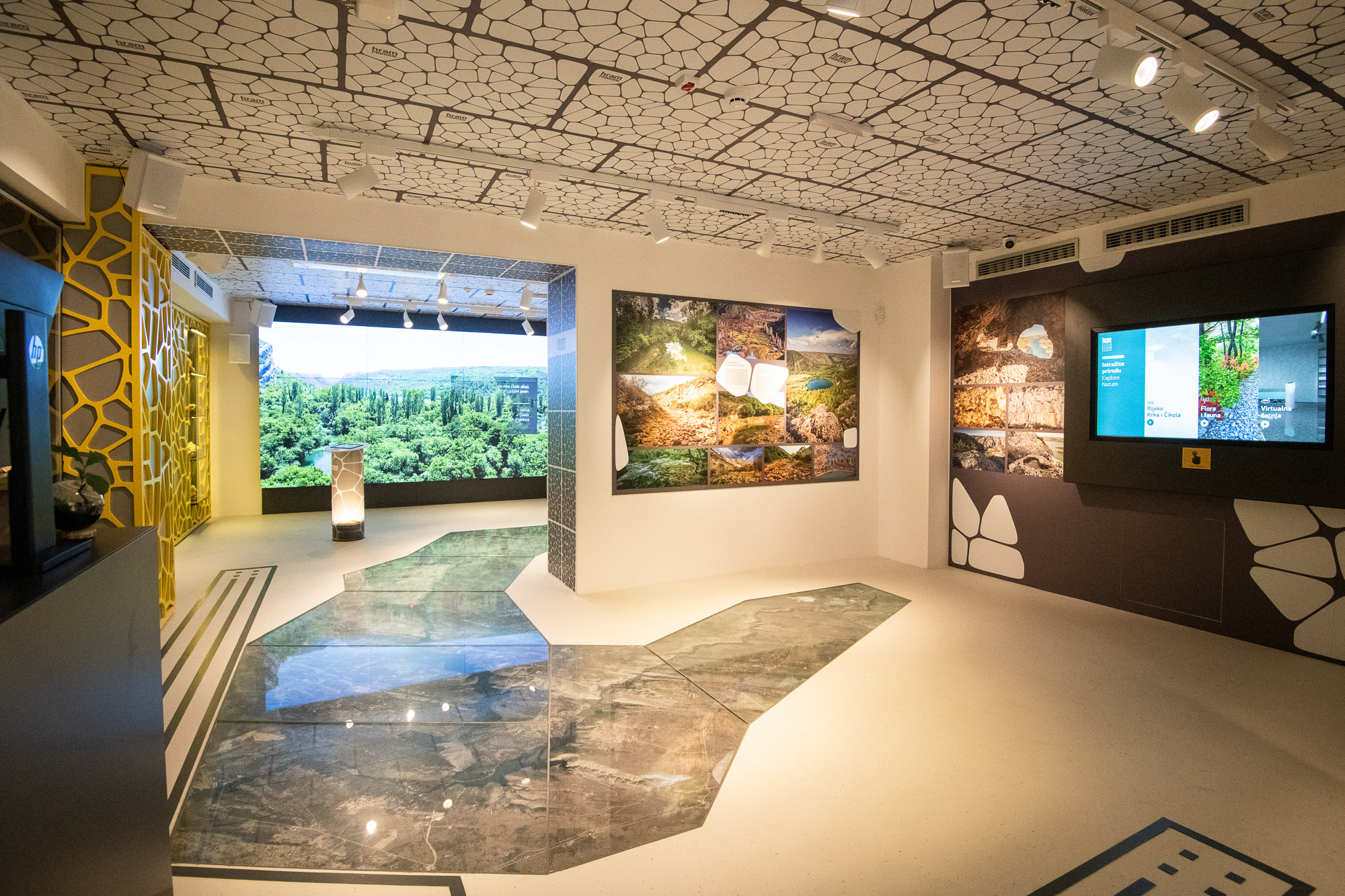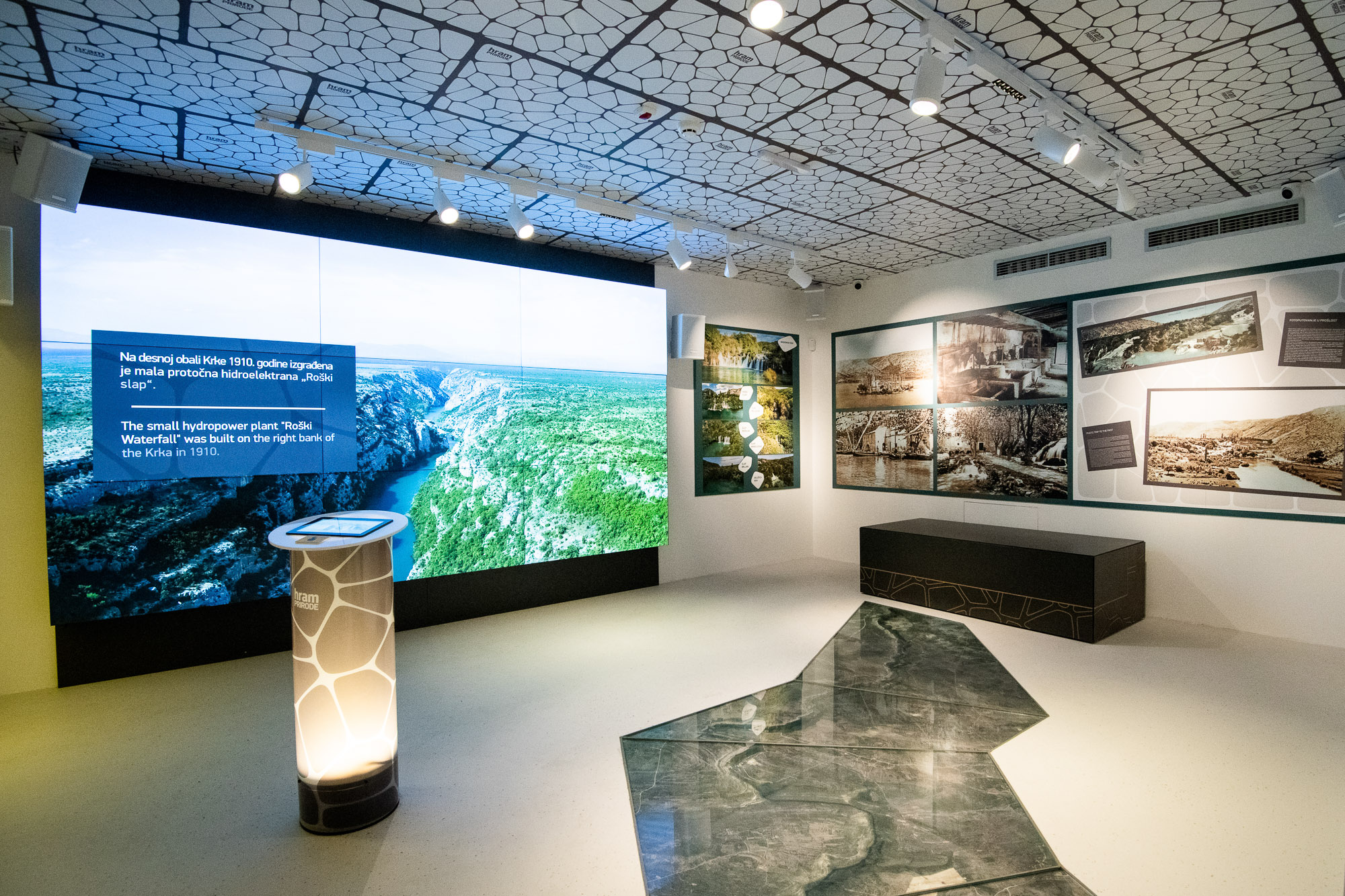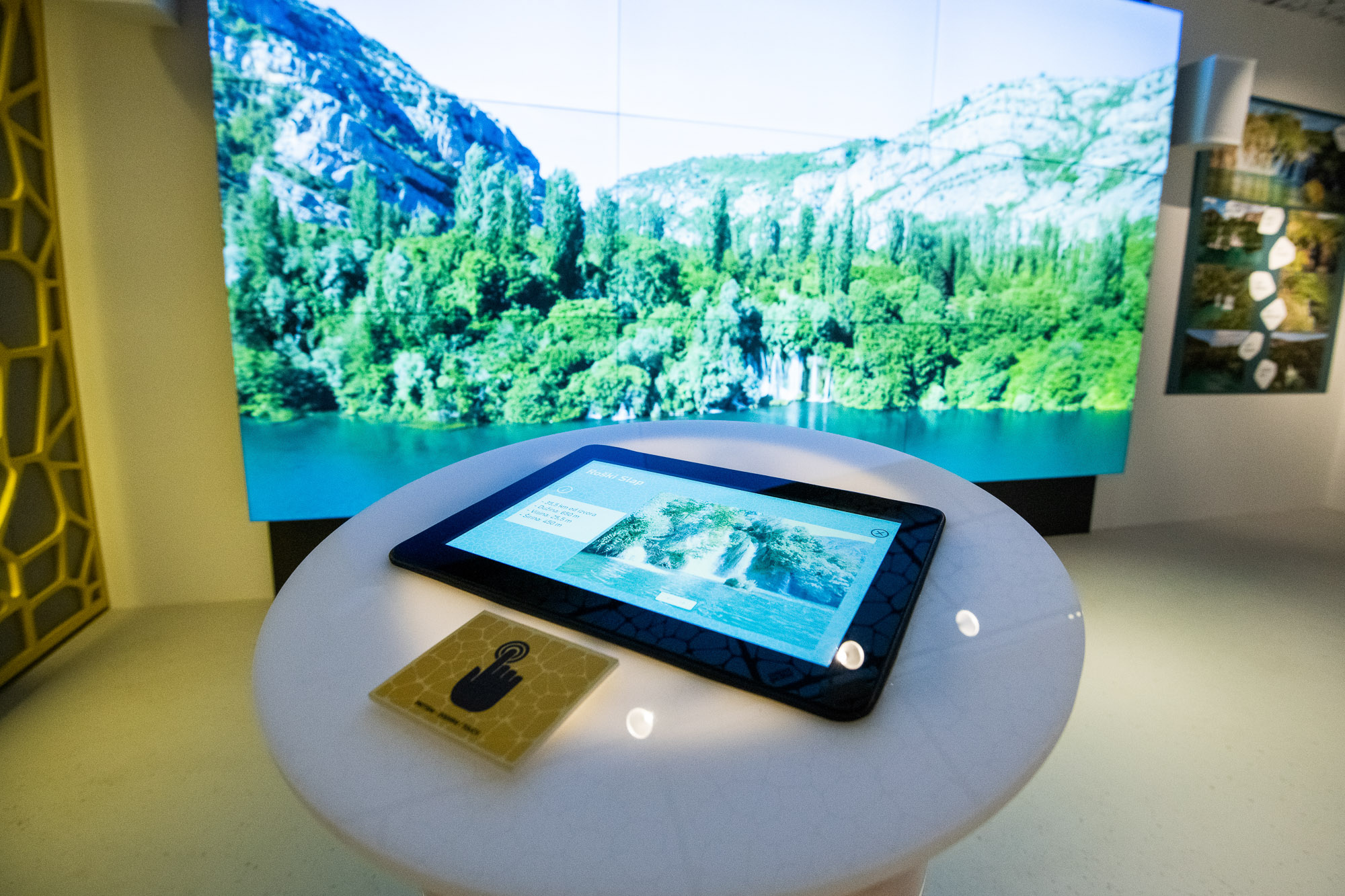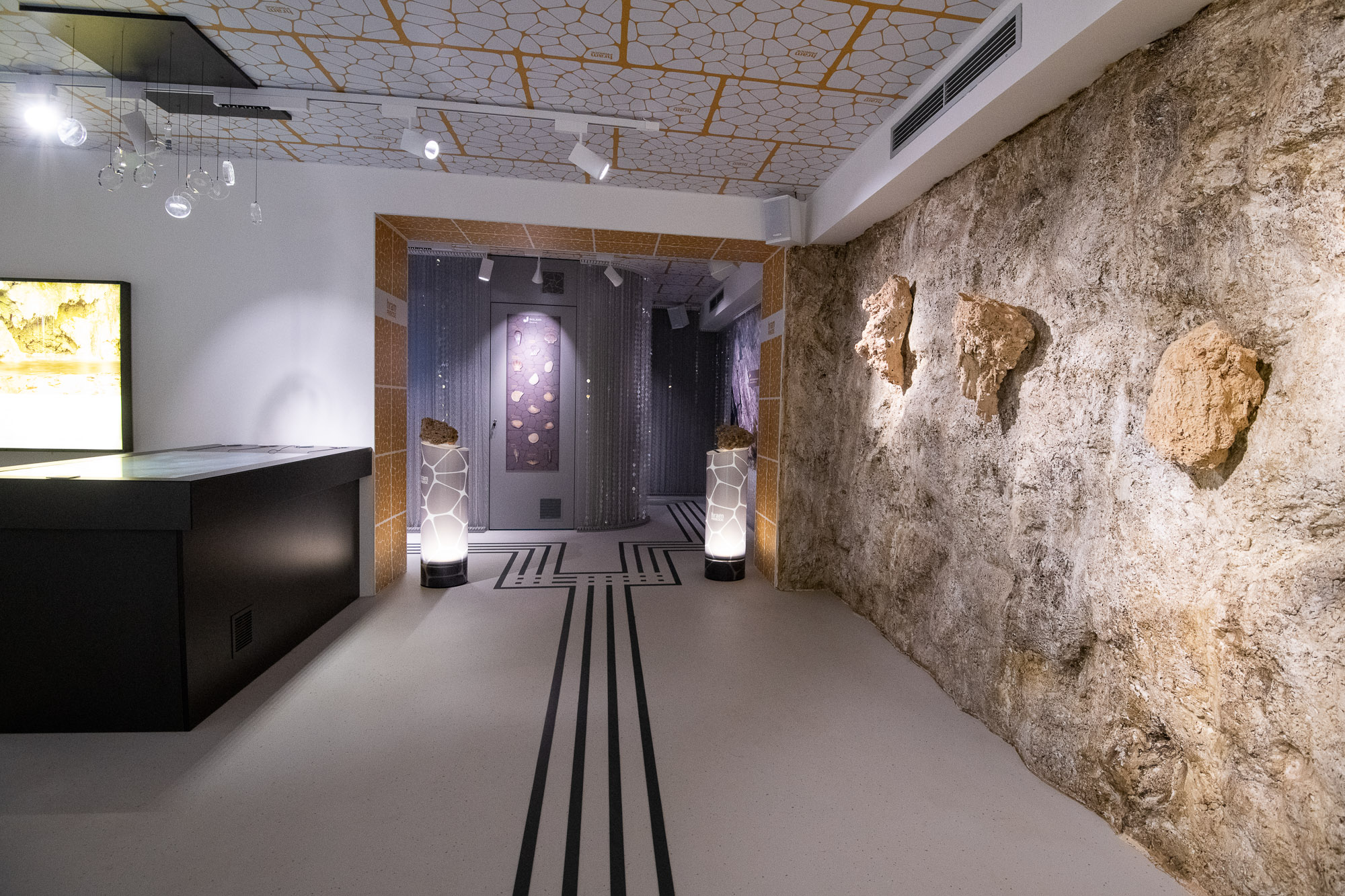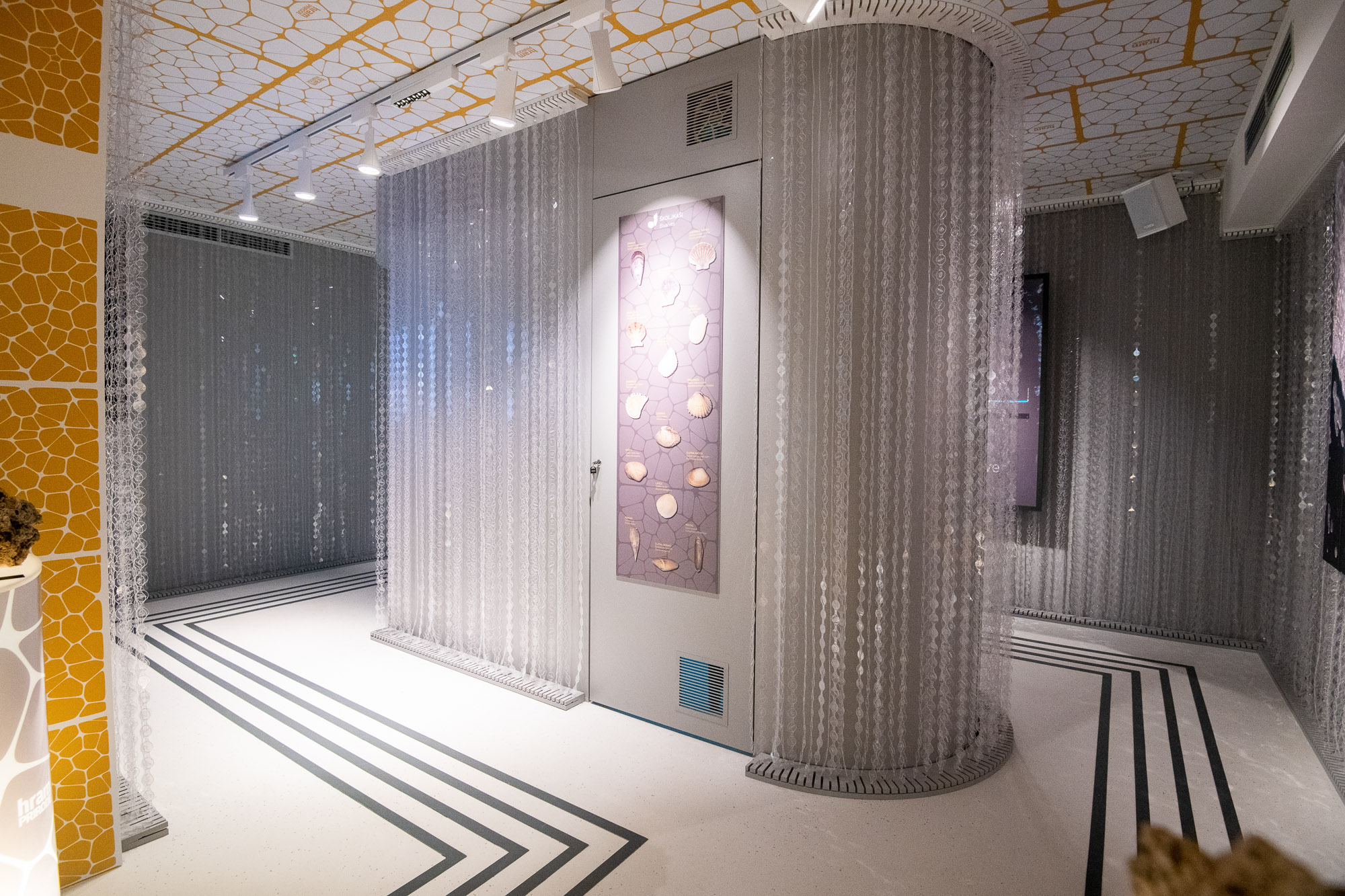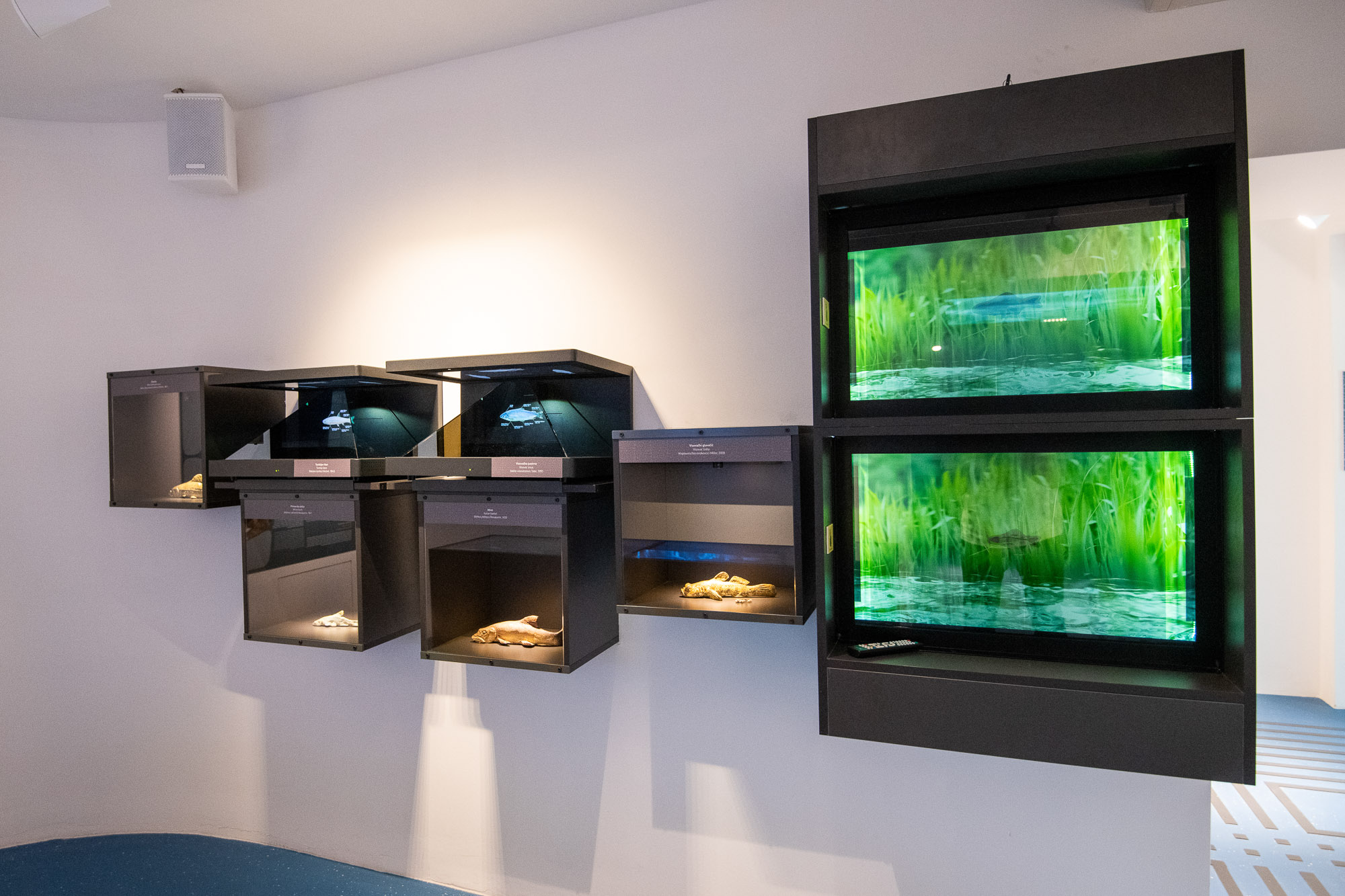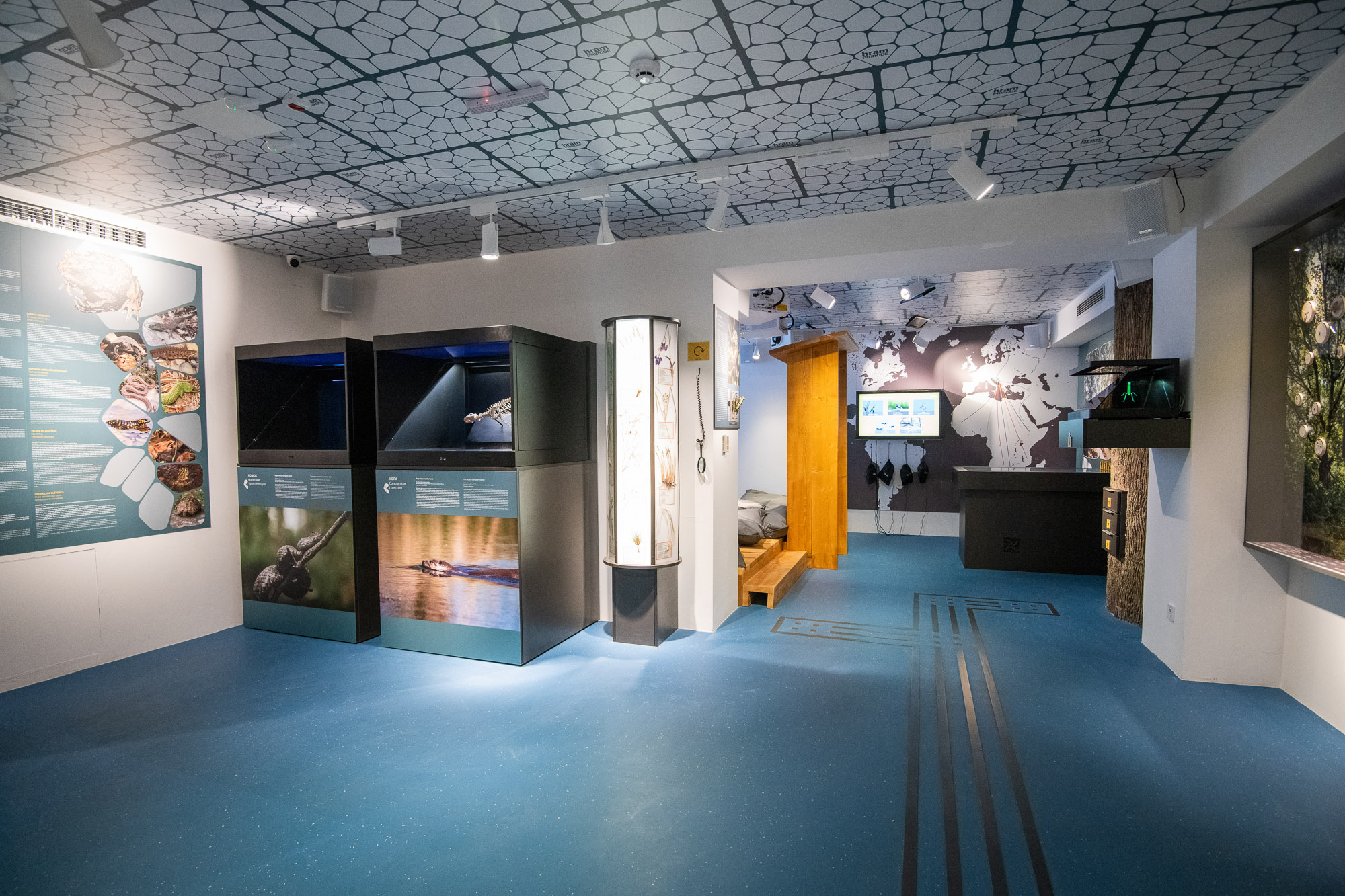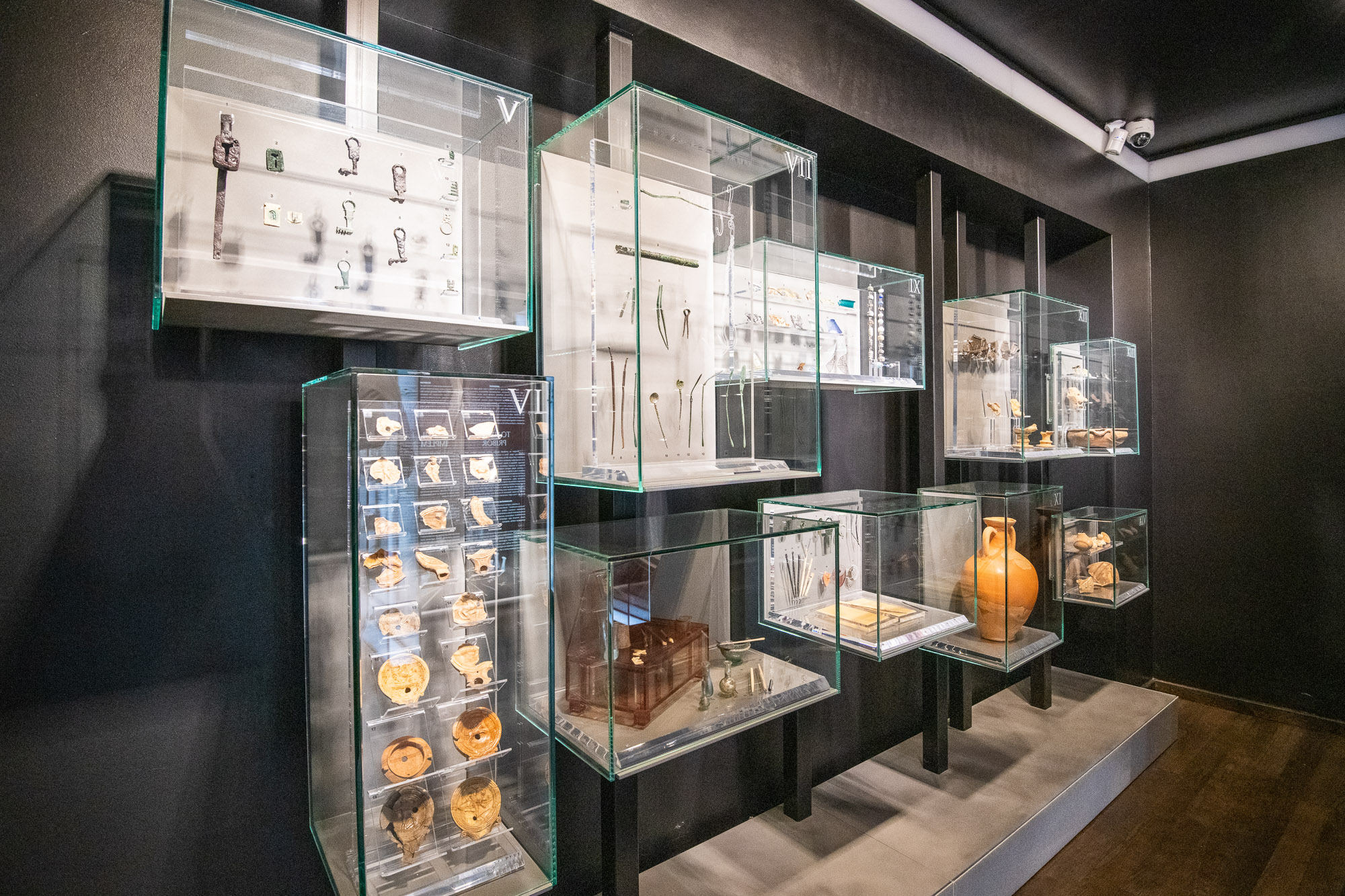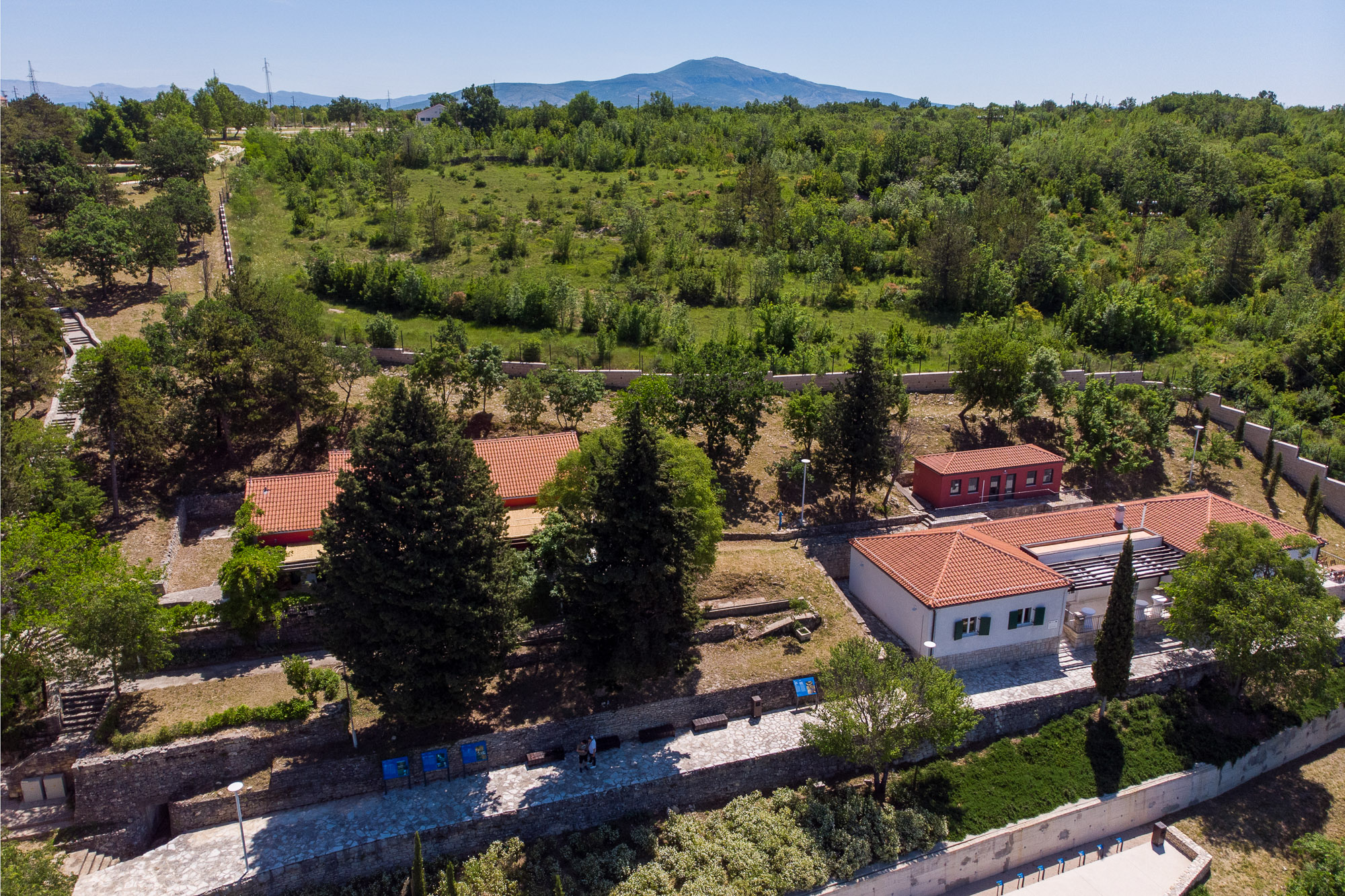Temple of Nature
Using the newest technology and designer solutions, the natural history collection presented in the Temple of Nature interprets the wealth of biological diversity in this protected area.
The exhibition space consists of six thematic rooms situated in the basement, ground floor and upper floor. It was the configuration of the building that inspired the collection, presenting the area of Krka National Park through the creation of the living world. The collection is maximally interactive: visitors find themselves in the role of explorers and play various roles to discover the collection, by turning over the content implemented within it.
The story begins in the basement, which personifies the underground where life began. Visitors travel through the geological past of the Earth and reveal fossils, the petrified remains of living organisms. Life then begins in the basement, which on the Krka dates far back into prehistoric times, in the period of the Early Neolithic, the time of origin of the archaeological findings discovered in the Oziđana pećina cave. In using augmented reality technology, visitors can view the cave and see the subterranean animals that shared the cave spaces inhabited by prehistoric humans.
On the first floor, visitors learn about the sensitive and complex process of tufa formation and the organisms that are a part of this process. Water is the element that dominates the entire exhibition space, with the central exhibit of the cross-section of the Krka River, and the multimedia display of how its canyons were created.
The main collection information desk is found here, and the entire exhibition space can be viewed through the virtual walk of the Temple of Nature.
The endemic and rare freshwater fish fauna, as the result of the geological past of the river, make the Krka a natural monument of ichthyology of the highest national and international value. That is why an entire room on the second floor is dedicated to these fish. Visitors can play and do some interactive “angling”, but will ultimately return their catch into the river, because fishing is prohibited in the Park. In the final room, visitors walk through the habitats of Krka National Park that are an important element of the Park’s biodiversity. Here we find numerous protected species of butterflies and insects, amphibians and reptiles. Visitors can use the audio guides to hear the calls of different bird species, and learn more about this important bird area that is significant at the European level.
